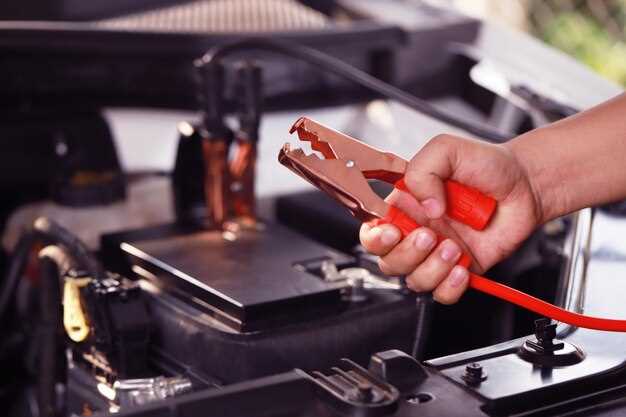How to troubleshoot electrical issues in your vehicle

When it comes to car maintenance, one of the most critical yet often overlooked aspects is the electrical system. The health of your vehicle’s electrical components plays a significant role in its overall performance and reliability. From the ignition system to the battery and wiring, a malfunction in any of these elements can lead to frustrating issues and, in some cases, leave you stranded on the road. Understanding how to diagnose and address these problems can save you time and money in the long run.
Electrical problems in cars can manifest in various ways, including dimming headlights, an unresponsive ignition, or malfunctioning dashboard lights. These symptoms often indicate deeper issues within the electrical system that require immediate attention. By familiarizing yourself with common electrical problems and their causes, you can take the first step toward effective troubleshooting. This article will guide you through essential diagnostic techniques and provide insights into how to identify and resolve electrical issues in your vehicle.
Moreover, addressing electrical concerns proactively not only enhances your car’s performance but also contributes to safety on the road. A well-functioning electrical system is paramount for optimal operation of essential features such as anti-lock brakes and airbag systems. Stay tuned as we explore specific troubleshooting methods, discuss tools that can aid in the process, and highlight preventative measures to keep your car’s electrical system in peak condition.
Identifying Common Symptoms of Electrical Failures
When dealing with electrical issues in your car, recognizing the symptoms is crucial for early diagnosis and repair. Poor performance of electrical systems can lead to various problems that affect the vehicle’s operation.
One of the most common signs of electrical failure is difficulty starting the engine. If your car struggles to turn over or requires multiple attempts to start, it may indicate issues with the battery, starter, or wiring.
Another symptom to watch for is dim or flickering headlights and dashboard lights. This could suggest an inadequate power supply due to a failing alternator or battery problems. Consistent dimming could lead to complete electrical failure if not addressed promptly.
Malfunctioning accessories, such as power windows, door locks, or radio issues, often point to electrical faults. If these components operate intermittently or stop working altogether, there may be a problem with the electrical connections or switches.
An unusual burning smell can also be a critical indicator of electrical failure. This symptom often arises from short circuits or overheating wires, which can pose serious safety risks if left unchecked.
Finally, if you notice persistent blown fuses, it usually signifies an underlying electrical problem. Regularly replacing fuses without addressing the root cause can lead to more severe electrical issues.
By being aware of these common symptoms, you can help ensure your car remains in good working condition and address electrical failures before they escalate into more significant problems.
Using Diagnostic Tools to Pinpoint Electrical Problems

Identifying electrical issues in vehicles can be a complex task, but using diagnostic tools can simplify the process significantly. The first step in electrical diagnostics involves gathering accurate data on the vehicle’s electrical systems. Tools such as multimeters, scan tools, and oscilloscopes are essential for measuring voltage, current, and resistance, helping technicians pinpoint specific problems.
Multimeters allow for precise measurement of voltage levels across different components, which is crucial for detecting shorts, opens, or even faulty sensors. By checking the voltage drop across electrical connections, technicians can identify areas of high resistance that may indicate corrosion or loose connections.
Scan tools play a vital role in modern vehicle diagnostics. These tools interface with the vehicle’s onboard diagnostic system (OBD-II) to retrieve trouble codes and real-time data from various sensors. Analyzing these codes can reveal underlying electrical issues affecting performance, such as problems with the ignition system or emissions controls. Understanding the context of the error codes is essential for the next steps in the diagnosis.
Oscilloscopes are advanced tools that help visualize electrical signals, allowing technicians to see fluctuations in voltage over time. This is particularly useful for diagnosing more intricate problems, such as intermittent electrical faults or issues with signal integrity in data lines. By examining the waveforms, technicians can determine whether components are functioning within their specified parameters.
In addition to these tools, familiarity with wiring diagrams and schematics is essential for troubleshooting. A thorough understanding of the vehicle’s electrical architecture enables technicians to trace circuits and isolate problems effectively. Combining this knowledge with the data gathered from diagnostic tools leads to more accurate and efficient troubleshooting.
Overall, utilizing diagnostic tools in the electrical troubleshooting process empowers technicians to quickly identify and remedy issues, ensuring vehicles operate safely and efficiently.
Steps to Repair Typical Electrical Components in Cars

Repairing electrical components in a car requires a systematic approach to ensure accurate diagnostics and effective solutions. Follow these steps for successful repairs.
First, identify the specific electrical issue affecting your vehicle. Common symptoms include dashboard warning lights, failure of accessories, or starting problems. Thoroughly investigate which components may be related to the issue.
Next, gather the necessary tools, such as a multimeter, wire strippers, and basic hand tools. A multimeter is crucial for testing voltage, continuity, and resistance in various circuits. Make sure the vehicle is turned off before you begin any work.
Start your diagnostics by checking the electrical connections. Loose, corroded, or damaged terminals can lead to poor circuit performance. Clean or replace connections as needed to ensure solid contact.
If the issue persists, proceed to test the affected component. For instance, if the problem lies with the battery, check its voltage. A healthy battery should show around 12.6 volts when fully charged. If it falls below this, consider charging or replacing the battery.
When diagnosing fuses, visually inspect them for any signs of burn or damage. If a fuse is blown, replace it with one of the same amperage. Always address the underlying cause of the blown fuse to prevent recurring issues.
If the alternator is suspect, test its output by measuring the voltage across the battery terminals while the engine is running. Ideally, the voltage should increase to about 13.8 to 14.5 volts, indicating the alternator is functioning correctly.
Examine wiring harnesses for frays or breaks. If damaged, repair or replace the wiring to restore proper function. Pay attention to areas where the harness may rub against sharp edges, leading to wear.
Lastly, after making repairs, it’s crucial to conduct a final test. Start the engine and check for normal operation of the repaired component. Monitor the system for any return of symptoms to ensure that the repair was successful.




